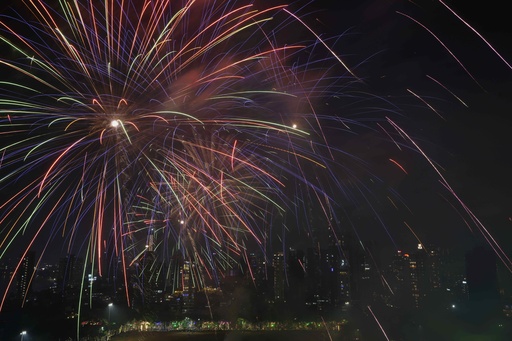
LUCKNOW, India — On Wednesday evening, millions of Indians commenced the joyous festivities of Diwali, the much-celebrated Hindu festival of lights. This year, a remarkable achievement was marked by the lighting of 2.51 million earthen oil lamps at dusk along the banks of the Saryu River in Ayodhya, a city revered as the birthplace of the deity Lord Ram.
Diwali stands as the most significant festival for Hindus, encapsulating the spirit of communal gathering, gift-giving, and the illumination of homes and public spaces. Traditionally, the occasion is celebrated with the lighting of oil lamps, candles, and the exuberance of fireworks. A special evening prayer is dedicated to the goddess Lakshmi, who symbolizes prosperity and good fortune.
The occasion was notably recognized by a representative from Guinness World Records, who presented a certificate to Uttar Pradesh Chief Minister Yogi Adityanath, acknowledging the record-breaking number of lamps that surpassed the previous year’s total of 2.2 million. The historic event was observed with the help of drone cameras that offered aerial coverage.
Significantly, these celebrations unfolded in Ayodhya, where Prime Minister Narendra Modi inaugurated a contentious temple dedicated to Lord Ram last year on the site of a demolished mosque. This temple’s establishment has been viewed as a significant victory for Modi’s administration, catering to the long-standing aspirations of many Hindus.
During the festival, approximately 30,000 volunteers, predominantly college students, worked diligently to ensure the lamps, known as “Diyas,” were lit along the riverbanks, streets, and building rooftops, maintaining a systematic layout over the designated time.
Dr. Pratibha Goyal, vice-chancellor of Dr. Ram Manohar Lohia Avadh University, coordinated this extensive effort, which led to the luminous display along 55 steps of the Saryu River spanning an impressive 1.5 kilometers (around one mile). With the lamps illuminated for more than five minutes, Ayodhya achieved its seventh record for the largest display, as confirmed by government spokesperson Shishir Singh.
In total, roughly 91,000 liters (about 24,000 gallons) of mustard oil were utilized to light these lamps, further enhancing the festive atmosphere. Ayodhya transformed into a mesmerizing city of lights, accompanied by devotional songs (bhajans) and an evocative laser show that depicted scenes from the revered Ramayana. An eco-friendly fireworks display vividly illuminated the night sky, while traditional decorations adorned the city, creating a vibrant atmosphere reinforced by cultural performances.
The festival also included a grand prayer gathering featuring 1,100 priests conducting rituals along the river’s edge. Enhanced security measures were employed throughout the city, with paramilitary commandos, bomb detectors, canine units, facial recognition technology, and aerial surveillance drones ensuring safety during the celebrations, as noted by police officer Rajkaran Nayyar.
Major Hindu festivities, including Dussehra and Diwali, are often intertwined with the legendary narratives of Lord Ram that teach values such as truth, sacrifice, and moral governance. While the grandest Diwali celebrations are slated to take place nationwide on Thursday, the spirit of the festival was already vividly alive across India this Wednesday.
